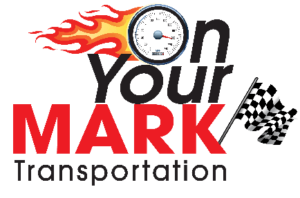A driver for GBB (Great Big Busline) decides to start his own charter service. This entrepreneurial soul figures that he can hold his costs down by using GBB’s buses, simply picking one up off the “ready line” every time he has a charter. They’re sitting there, fueled, cleaned and serviced, why waste such a valuable resource?
It worked fine for months. He’d show up in uniform and his passengers all assumed they were chartering from GBB. One day he was late for a pickup, and his customer was concerned enough to call GBB, asking when the coach would arrive.
You guessed it… someone in Operations cleverly figured out that they didn’t have a charter that day. Realizing that GBB ran scheduled service, and virtually no charters, and voila… an explanation for the buses that drivers couldn’t find on the ready line in recent months.
SO, the Driver/Charter Operator won an all expenses paid holiday in the Entrepreneurs Section of the Greybar Hotel.
All because he was late.
Survey after survey tells us that nothing frosts the busy public more than a coach that is late. It’s bad enough when a line bus runs behind schedule, but there are often factors that can’t be controlled. There is no excuse for a bus STARTING its run late, or missing the spot time for a charter.
It sends a message to the customer that their time is less important than the bus company’s, and can induce panic when scheduled events are at risk. The customer picked the start time for a reason.
There are so many things in transportation that are hard to control, but “showing up” isn’t one of them.
So, what steps can you implement within your company to ensure this doesn’t happen? Below are 5 ideas to help keep your team running on time.
- Pay for drivers to arrive early. Drivers need to turn up at your garage early enough to easily make it to their pickup on time. If a driver can’t show up on time, how can you trust them with your coach and your passengers? It’s worth it to your company to build into the schedule ample time on the front end to cover for any unexpected delays.
- Require drivers to take the time to pre-check their pick up spot. If it’s a new or unusual pickup spot, allow drivers time to scope it out in advance. Checking to be sure that drivers won’t encounter construction or road delays getting to the pick up location. It is also key to make sure that the location has plenty of space for loading the bus.
- Establish clear lines of communication for when trouble arises. On the rare occasion where a driver really can’t make it, clear lines of communication need to be established, so the customer never sees the hiccup. A meteor striking their car is a reasonable excuse for a driver’s absence, but not for failing to let the appropriate person know. With modern technology like GPS and cell phones, we need to do a good, honest, job of keeping the customer informed about where their coach is. The only thing worse than knowing it’s late… is NOT knowing it’s late (is it coming at all?)
- Buses that are ready to go should be… ready to go. No surprises when the driver leaps into the seat. This requires that your maintenance team plan well ahead of a trip to complete any safety checks or repairs. Nothing should be done at the last minute. When there is a problem, it’s better to know sooner rather than later. Depending on the size of the company, spare buses and drivers can be part of a plan, but no matter what… there must be a plan.
- Don’t farm work to companies that aren’t as reliable as yours, because you’re going to be blamed for their mistakes.
Getting this right starts with management letting everyone in the company know that, other than cherishing safety, being on time may be the most important thing your business does. It may involve some personal sacrifice at times.
It doesn’t matter how well the rest of the journey goes, the atmosphere is poisoned if the trip starts late.
Woody Allen got it right when he said “80% of success is showing up”.

